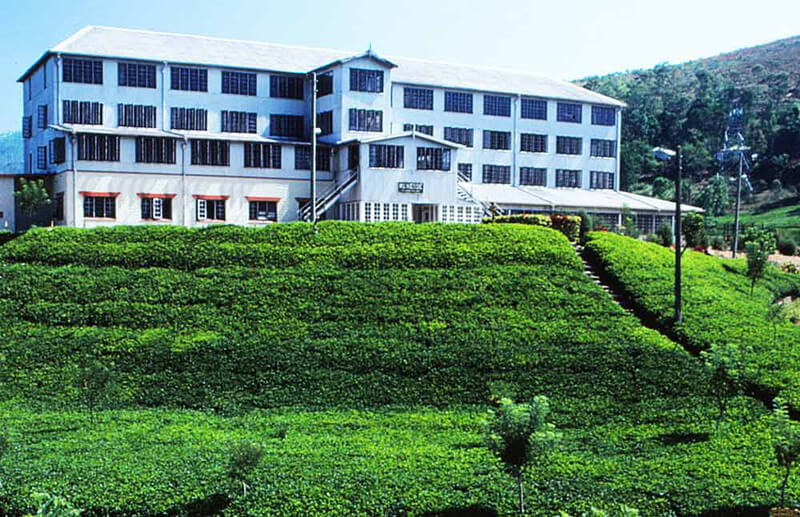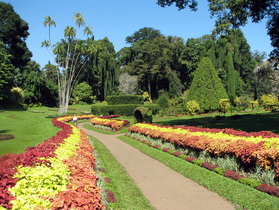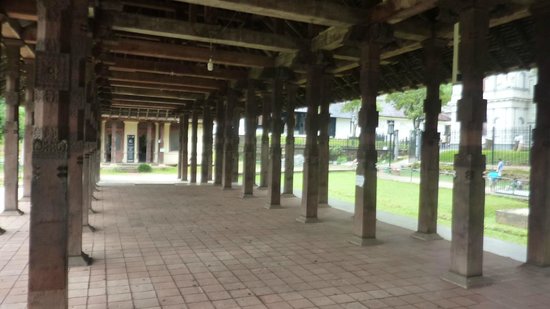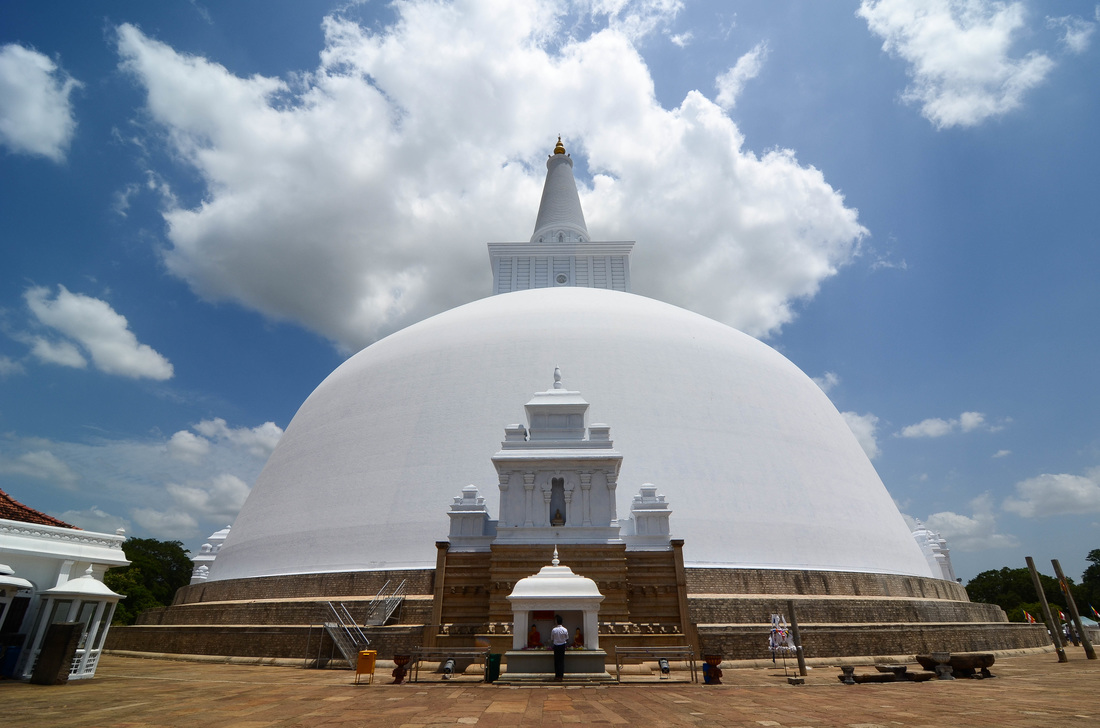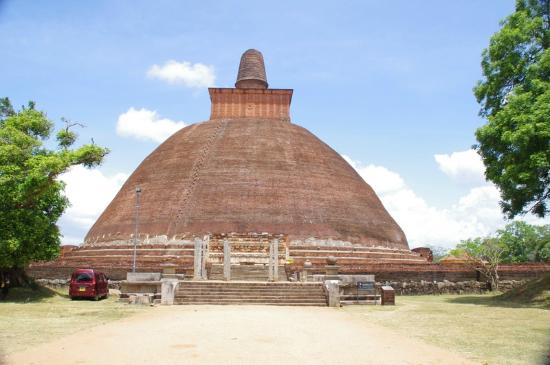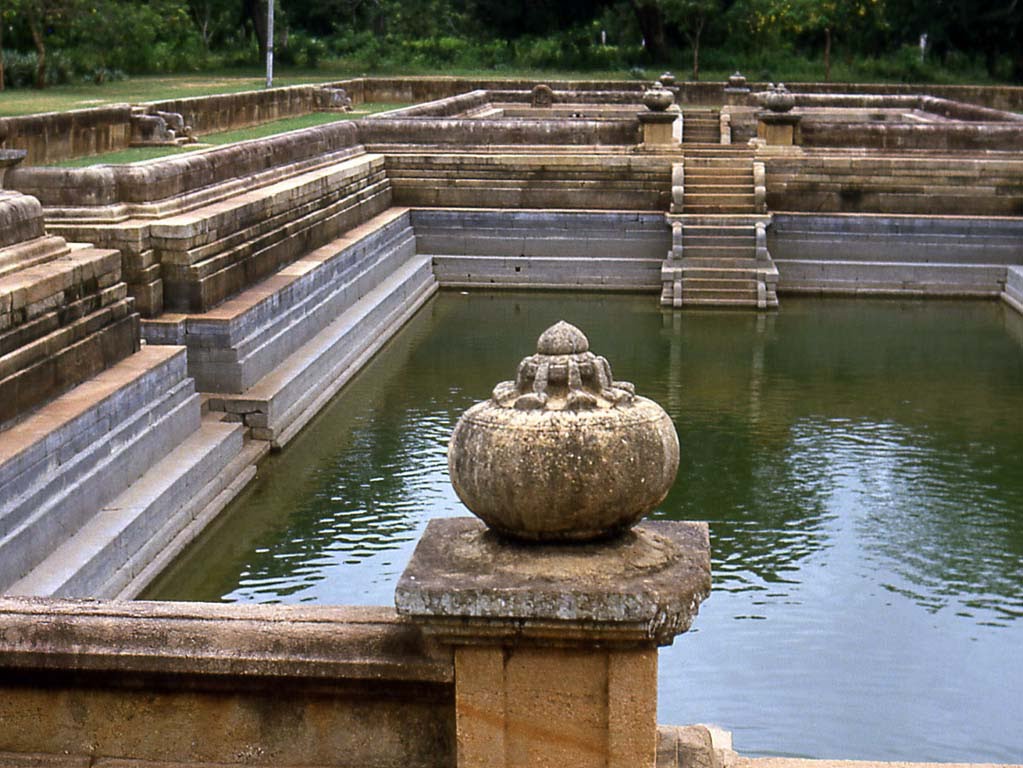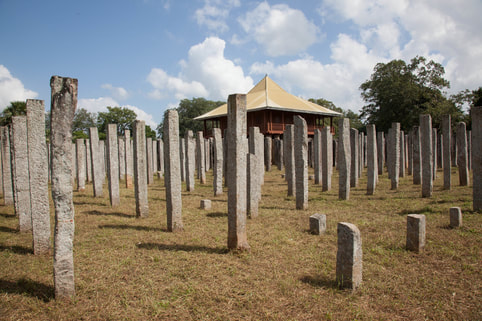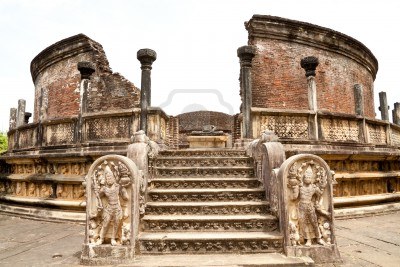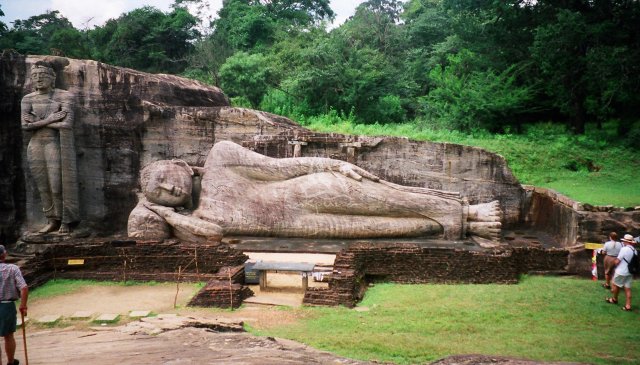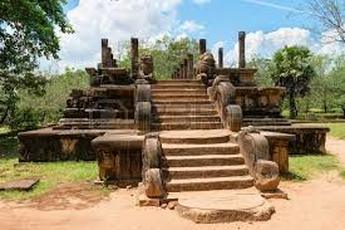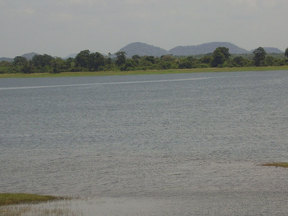-
Kandy
-
Dambulla
-
Sigiriya
-
Anuradhapura
-
Polonnaruwa
-
Adams Peak
-
Galle
<
>
Kandy
Kandy, the last royal capital of Sri Lanka is a major tourist destination. ( 115kM from Colombo at 465 meters above sea level). Famous for the Temple of the Tooth and many other temples the city could be called the cultural capital of the island. Kandy Perahera, the pageant of the temple of tooth where Buddha's tooth is kept is held either in July or August each year to parade the golden caskets is a must see itenary if one is visiting Sri Lanka during these months. The final night procession is the most spectacular event of the country. More than 50 elephants parade the city accompanied by the drummers, dancers and chieftains.
The city established in the 15th century was the last royal capital where 2500 years of royal rule ended. This bustling market town is rich in cultural diversity has plenty of iteneries to offer to the tourists from songs dances and handy crafts to ancient temples and adventure activities. Kandy is a good transit point to the cultural triangle to the north or hill country to the south. The city is also a good source of souvenirs or to experience many cultural performances at it's various hotels in the city.
Kandy, the last royal capital of Sri Lanka is a major tourist destination. ( 115kM from Colombo at 465 meters above sea level). Famous for the Temple of the Tooth and many other temples the city could be called the cultural capital of the island. Kandy Perahera, the pageant of the temple of tooth where Buddha's tooth is kept is held either in July or August each year to parade the golden caskets is a must see itenary if one is visiting Sri Lanka during these months. The final night procession is the most spectacular event of the country. More than 50 elephants parade the city accompanied by the drummers, dancers and chieftains.
The city established in the 15th century was the last royal capital where 2500 years of royal rule ended. This bustling market town is rich in cultural diversity has plenty of iteneries to offer to the tourists from songs dances and handy crafts to ancient temples and adventure activities. Kandy is a good transit point to the cultural triangle to the north or hill country to the south. The city is also a good source of souvenirs or to experience many cultural performances at it's various hotels in the city.
|
Vertical Divider
Temple of tooth Relic
The main attraction of the city and also the most sacred Buddhist establishment in Sri Lanka is where one of Buddha's tooth is being kept. Ceylon Tea Museum
This was previously the four-storied Hantana Tea Factory, built in 1925. Now it has been elegantly converted to a Tea Museum by the Sri Lanka Tea Board and the Sri Lanka Planters' Association. |
Vertical Divider
Peradeniya Botanical Garden
Situated in a loop of the Mahaweli River and 6 km west of Kandy, This garden cover some 60ha (150 acres) of trees, lawns and flowering shrubs, Royal Palace of Kandy Last Royal Palace built in the island. Although only part of the original palace complex remain. The Temple of the Tooth was part of this complex, due to the ancient tradition that stated that the monarch is the protector of the relic though which the ruler of the land.
|
Vertical Divider
Kandyan Dance Show
one of the famous evening events not to be missed when visiting this heritage city. Listen to the captivating traditional drummers and be mesmerized viewing the many different art forms from the up country and low country of the island. Pinnawala Elephant Orphanage
an orphanage, nursery and captive breeding ground for wild Asian elephants located at Pinnawala village In 2011, there were 88 elephants, including 37 males and 51 females from 3 generations, living in Pinnawala. |
|
Vertical Divider
Dambulla Golden Rock Temple
Rajamaha Temple of Rangiri Dambulla (Golden Rock Temple) Located north of Kandy and considered by most to be the centre point of Sri Lanka. Dambulla is a town built around a vast isolated rock mass and a World Heritage City, declared by UNESCO. The name Dambulla derives from Damba - Rock and Ulla - fountain. One sees the incessant drip of water from the fountain within the main image house. This complex of caves at Dambulla is one of the most impressive Buddhist Temples in the world. It was here that King Vattagamini Abhaya (Valagamba) took refuge in the 1st century BCE. He later turned the caves into a rock temple. Later kings made further improvements, including King Nissanka Malla who had the temple interior gilded, earning it the name of Ran Giri - Golden Rock. |
Vertical Divider
Dambulla Caves
These 80 or more caves tell of the inhabitants dating back to the 3rd Century BCE. Five main caves hold the holy Buddhist shrines. The stupa was built in the 5th century AD and the caves contain precious paintings and innumerable Buddha sculptures. Among the paintings, two of the most magnificent depict the temptation of the Buddha by the demon Mara and the First Sermon of the Buddha. |
|
|
Sigiriya
Sigiriya also known as the Lion’s Rock is a large stone and an ancient rock fortress . The palace ruins sites on the top of this massive rock which is located in the central Matale District of Sri Lanka, surrounded by the remains of an extensive network of gardens, reservoirs, and other structures. Sigiriya is a popular tourist destination for its ancient paintings called frescos. The rock was also declared by UNESCO as the 8th World Wonder and is one of the World Heritage Sites of Sri Lanka.Sigiriya always had an important role in politics and military of Sri Lanka and holds a very interesting history. There are many stories that revolve around Sigiriya that made this prominent rock be significant. History indicates that prince Kashyapa, the kings son by a non-royal consort seized the throne from King Dhatusena. At this time the throne was taken by force and the rightful heir to the throne prince Moggallana fled to India vowing revenge on prince Kashapa who murdered his own farther for the throne. At the time Anuradhapura was the capital but fearing the inevitable attack from prince Moggallana, Kashyapa moved the capital to Sigiriya and fortified his self by building a rock fortress. But eventually prince Moggallana declared war against King Kashyapa and defeated him. All these factors came together to make Sigiriya the important location it is today. If you are in Sri Lanka this is one place you shoudln't miss. You can climb to the very top and witness the riuns of the fortress and the old palace and a very beautiful scenery. |
Anuradhapura
Declared by the UNESCO as a world heritage city, Anuradapura is regarded as Sri Lanka’s first known kingdom and the capital of the island for many centuries. Being well known for its cultural and religious value the city attracts many local and foreign visitors who love to explore the ancient history of Sri Lanka.
Among the many attractions in the city are the Dagabas, tanks, wild life, art and architecture which are highly respected for their religious and cultural value. The civilization which developed through Anuradhapura is woven round the tanks, the dagabas and temples. These attractions vary from the world’s oldest Bo tree, known as the Sri Maha Bodi which is a branch of the sacred Bo tree in which the Lord Buddha attained enlightenment, to the tallest Dagabas, temples and remains from palaces which are regarded by the Buddhists as the depiction of Buddhism.
Declared by the UNESCO as a world heritage city, Anuradapura is regarded as Sri Lanka’s first known kingdom and the capital of the island for many centuries. Being well known for its cultural and religious value the city attracts many local and foreign visitors who love to explore the ancient history of Sri Lanka.
Among the many attractions in the city are the Dagabas, tanks, wild life, art and architecture which are highly respected for their religious and cultural value. The civilization which developed through Anuradhapura is woven round the tanks, the dagabas and temples. These attractions vary from the world’s oldest Bo tree, known as the Sri Maha Bodi which is a branch of the sacred Bo tree in which the Lord Buddha attained enlightenment, to the tallest Dagabas, temples and remains from palaces which are regarded by the Buddhists as the depiction of Buddhism.
|
Ruwanwelisaya
The Mahathupa (Great Thupa) is today known as the Ruvanveliseya Dagaba. This is the centre piece of The Maha vihara (Great Monastery). The Maha vihara, because of it's long history of guarding the traditions of Theravada Buddhism, and because its monks kept the most sacred shrines at Anuradhapura, was the most important monastery of the city. Although not it's true height and original form, the fine white Ruvanveliseya Dagaba, guarded by a 'wall of elephants', still looks magnificent. |
|
Archaeology Museum - Anuradhapura
The Archaeology Museum showcases many of the artifacts found on the numerous excavations of the ancient ruins, including jewelry, gems, coinage and pottery, with a particular emphasis on religious and elite royal objects of historical importance. Amongst the displays, there is a model of the Thuparama Vatadage and an artifact chamber from Mihintale. The Folk Museum concentrates more on the social findings from archaeological digs and gives a fascinating insight into how the people of the ancient kingdom lived in those long gone days. The ancient cities proximity to the south coast of India is reflected in many of the cultural remains on view in the Folk Mu |
|
Jetavanarama.
King Mahasen (273-301 AD) built this largest stupa in Ceylon, and possibly the whole world. A part of a sash tied by the Buddha is believed to be enshrined here. Its height is said to be 400 feet (120 m). This is considered as the largest stupa in the whole world. This stupa belongs to the Sagalika sect. The compound of the stupa is 8 acres (3 ha). One side of the stupa is 576 feet (176 m) in depth. The 4 flight of steps at the four sides is 28 feet (8.5 m) in depth. The doorpost to the shrine which is situated at the courtyard is 27 feet (8 m) in height. It is a foot (0.3 m) underground. There are some stone inscriptions in the courtyard with the names of donors inscribed. |
|
The twin Ponds - Kuttam Pokuna
The twin ponds are a magnificent example of landscape architecture built on a grand scale. The ponds are in fact not twins at all, pond (b) being longer by 40 feet than pond (a). The stone molding of the baths and the flights of steps leading to the water are graceful and austere, but above all natural. Apart from their beauty, the twin ponds are very functional. Water which is fed through an inlet is cleaned and purified several times over; before the cool water gushes out into the pond through a lions-head spout. Besides this spout is a Naga stone, perhaps the best in Sri Lanka. The water eventually drains away from pond (b). |
|
Brazen Palace - Lova mahaprasada
A place like Brazen Palace which is also known as Lova mahaprasada attracts tourists to develop tourism in Sri Lanka since from the past. In order to have a tour to the Brazen Palace, you have to take Anuradhapura city of Central North Province in Sri Lanka and find out of the ancient ruins and sacred ruins of Anuradhapura. Brazen Palace is a building secured with a wide range of stone columns located between Ruwanwelimahaseya and Sri Maha Bodhi in Anuradhapura. One side of the building was 120m in length. There are 40 rows, each row consisting of 40 stone pillars, for a total of 1600 pillars. Legends may carry you to a great history conveying about unbelievable engineers and builders of Sri Lanka at that time. |
Polonnaruwa
Pulasthipura is the early historical name of Polonnaruwa; a UNESCO world heritage site, has a great history of conquest and struggle behind it and
rightfully forms the third element in the Cultural Triangle. Located about 140 kms north east from Kandy, Polonnaruwa offers hours of endless pleasure for history and culture lovers, as there are numerous sights of significance.
Polonnaruwa became the capital of Sri Lanka subsequent to the decline of Anuradhapura and witnessed the Sinhala Buddhist civilization reaching much greater heights. The vast irrigation network with reservoirs that looks like inland seas sustained such classic balance in rice cultivation, during the rule of King Parakramabahu the Great (1153-1186 AD) and Sri Lanka came to be known as the Granary of the Orient. The main attractions are the conserved ruins of glorious royal palaces, massive Buddhist temples, and unbroken monuments in colossal statues carved from sold rock boulders.
Polonnaruwa, with its conserved ruins and renovated ancient irrigation reservoirs is a “must visit” destination of Sri Lanka. As much as the conserved cultural monuments would enlighten the tourists, the wild life sanctuaries in the district of Polonnaruwa affords ample opportunities for the joy and fun in the close range of wild elephants, other mammals to the lovers of wildlife. At the city of Polonnaruwa the largest ancient irrigation reservoir called Parakrama Samudra (the Sea of Parakrama) which is always lovely, and with the excess of birdlife, it is seldom that there is not something interesting going on upon its shimmering expanses of waters.
rightfully forms the third element in the Cultural Triangle. Located about 140 kms north east from Kandy, Polonnaruwa offers hours of endless pleasure for history and culture lovers, as there are numerous sights of significance.
Polonnaruwa became the capital of Sri Lanka subsequent to the decline of Anuradhapura and witnessed the Sinhala Buddhist civilization reaching much greater heights. The vast irrigation network with reservoirs that looks like inland seas sustained such classic balance in rice cultivation, during the rule of King Parakramabahu the Great (1153-1186 AD) and Sri Lanka came to be known as the Granary of the Orient. The main attractions are the conserved ruins of glorious royal palaces, massive Buddhist temples, and unbroken monuments in colossal statues carved from sold rock boulders.
Polonnaruwa, with its conserved ruins and renovated ancient irrigation reservoirs is a “must visit” destination of Sri Lanka. As much as the conserved cultural monuments would enlighten the tourists, the wild life sanctuaries in the district of Polonnaruwa affords ample opportunities for the joy and fun in the close range of wild elephants, other mammals to the lovers of wildlife. At the city of Polonnaruwa the largest ancient irrigation reservoir called Parakrama Samudra (the Sea of Parakrama) which is always lovely, and with the excess of birdlife, it is seldom that there is not something interesting going on upon its shimmering expanses of waters.
|
Vertical Divider
Vatadage
The centrepiece of the ancient city of Polonnaruwa, the Dalada Maluwa (the Palace of the Sacred Tooth Relic), was a sacred grounds containing 12 magnificent buildings. Although there are numerous Vatadage’s across Sri Lanka, the Vatadage at Polonnaruwa is the most famed. As with many other Vatadage’s, it had a stupa in the centre with four Buddha images facing the key directions. The Vatadage, one of the oldest and most striking monuments in Polonnaruwa Gal Viharaya
Is the Theravada Buddhist Temple at Polonnaruwa with three Buddha Statues of gallant proportions and a smaller image having a touch of Mahayana Buddhist influence is the most perfect specimen of Buddha statues sculptured out of solid granite. According to the Culavamsa, the historical chronicle, Gal Vihara, is an archaeological wonder of the orient near the Demala Maha Seya at Polonnaruwa was built by King Parakramabahu the Great. Gal Vihara statues, are magnificently perfected according to the Oriental patterns, on an abrupt boulder of dark granite about 27 meters in length and 10 meters in height at the centre and sloping towards the ends are still in perfect preservation with their irresistible charm. |
Vertical Divider
The Royal Palace
In the centre of the complex are the ruins of the Royal Palace of King Parakramabahu the Great (1164-1196 AD). It had been a massive wood and stone structure seven storeys in height, with a floor plan of 31m by13m (100ft by 43ft).The upper floors were of wood, but now only the massive, and 3m (10ft) thick lower walls survive. Pulasthi Statue
In Polonnaruwa to the north of the Pothgul Vehera is a granite boulder, adorned with a large statue. This is one of the finest statues in the Island and of which the height is 11 feet 6 inches. The historians and the archaeologists have not confirmed its identity to date. Some refer to it as the statue of King Parakramabahu the Great because its closeness to one of his major irrigation works; others refer to it as Rishi Pulasthi’s statue. There are some mysterious reasons why the Department of Archaeology has still not declared that this statue belong Rishi Pulasthi even after the name been inscribed on the statue. When these factors taken into thought it proves that this statue is of Rishi Pulasthi. |
Vertical Divider
Audience Hall
Locate east of the Palace, used by the kings of Polonnaruwa to summon the Nobles and to meet the emissaries from foreign rulers. Delicately sculptured stone lions seated at the top of the steps leading into the hall were symbols of royal power, as were the elephants which form a fresco around the lower part of the outer wall. Next to the Audience Hall is the Kumara Pokuna (Royal Bathing Pool) which was fed from the watercourse which runs through the palace grounds. Lankathilaka Viharaya
Varies from the usual Buddhist Architecture. It is one of the most symbolic structures of the ancient kingdom of Polonnaruwa. Two great walls, each with a thickness of 4metre and height of 17 metre form a narrow aisle leading to a very impressive, although a headless Buddha statue still stands, over 14 metre in height built by King Parakramabahu the Great, the shrine is a definite deviation from Buddhist architecture: instead of the abstract symbolism of the Dagoba the attention is focused on the giant figure of the Buddha, which fill up the entire space in the shrine. |
|
Parakrama Samudraya
This vast water reservoir was built by King Parakramabahu-the Great(1153-1186). What you see today as the Parakrama Samudraya is only a part of his original creation. Parakrama Samudraya originally consisted of five large reservoirs separated by smaller dams to reduce the pressure on the main dam. Many smaller tanks have been built around the main tank to feed these primary tanks and to take excess water. |
Adam's Peak
|
Adam's peak Also known as Sri Pada is a 2,243 metres tall conical mountain located in central Sri Lanka. Adam's Peak is one of the major eco tourism destinations in the hill country of Sri Lanka . The key attraction of the ADAM'S PEAK WILDERNESS SANCTUARY is Adam's Peak itself. The 2243 metre peak has a great significance for various different religions. The huge footprint at the summit of this mountain is believed by Buddhists to be that of Lord Buddha (‘Sri Pada'), whilst Christians suggest that it was where Adam first set foot on earth, and Hindus claim that it belongs to Lord Shiva. As a result, the mountain peak has been a pilgrimage centre for over 1000 years. Whatever it's religious significance, this famous landmark offers some breathtaking views of the hill country and an enchanting wilderness sanctuary. The majority of climbers begin their ascent at night in order to arrive at the top in time for a magical sunrise when the mystical shadow of the peak is perfectly cast across the clouds. This eco tourism destination in Sri Lanka is one of those truly unique moments that will live on in your memory long after the aches and pains from the climb to the wilderness sanctuary have gone! In addition to Adam's Peak itself, the Peak Wilderness Sanctuary offers some superb nature trails through tropical rainforests, across rivers and past lush tea plantation. |
Galle
|
Galle Fort is situated on the south coast of Sri Lanka. It was first constructed by the Portuguese in 1588 to guard their domain on coastal Sri Lanka. Then the fort was extensively fortified by the Dutch when they took over the rule of Sri Lanka from the Portuguese in 1649. The fort is now considered part of Netherlands and the government of Netherlands is funding multiple projects to ensure the conservation of this historical, archaeological and architectural heritage monument.
Today the fort is home to a multi-ethnic and multi-religious population, and it has become one of the most popular tourist destinations in the country. The fort has been named a UNESCO World heritage sight in recognition for its unique exposition of “an urban ensemble which illustrates the interaction of European architecture and South Asian traditions from the 16th to 19th centuries.” |

